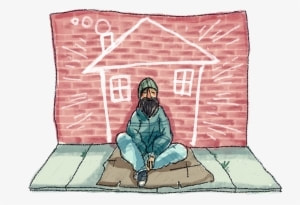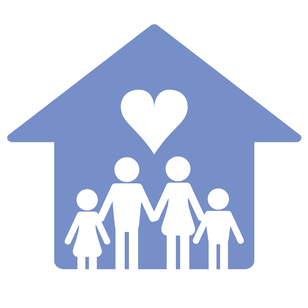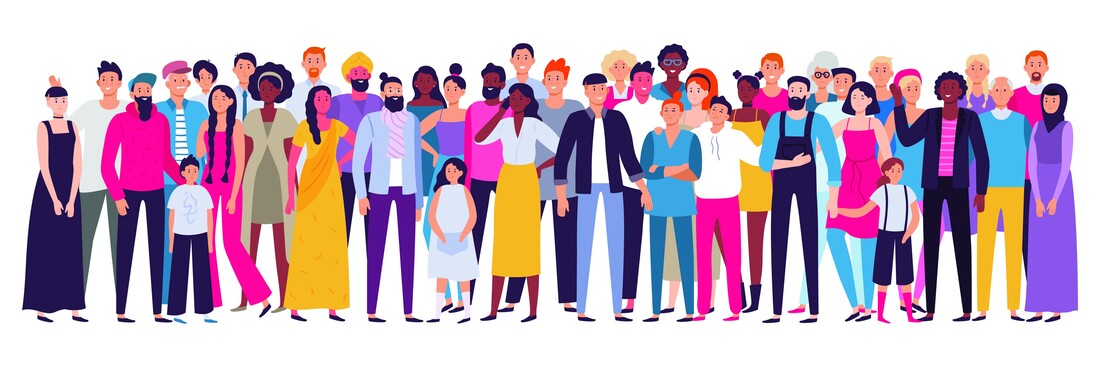|
By: Sarah Kelley, AmeriCorps Program Coordinator
For many of us, pets are like family. During the pandemic, we turned to our pets as a way to cope with loneliness, boredom, mental health challenges, and stress. For individuals who have experienced past traumas like domestic violence and homelessness, pets can play an especially important support role. When thinking about domestic violence, you might not immediately consider the impact violence has on pets in the home or what role animals play in the abuse. However, domestic violence advocates are increasingly aware of the strong link between animal abuse and domestic violence. Given that approximately 85 million American households have pets, and over 10 million people are survivors of intimate partner violence every year, the number of domestic violence incidents that involve pets is significant (The Safe Haven Network). The unconditional love and support from a pet can have many benefits, including reducing our stress, social isolation, depression, and blood pressure. Animals can also increase our quality of life, happiness, prosocial behaviors, and allow us to feel needed as caregivers and nurturers. Many pets, especially dogs, can be extremely loyal and protective of us. This strong bond between pets and their owners can be used manipulatively, especially in cases of domestic violence. Animals can be used by abusers to reinforce power and control over someone, to terrorize or frighten them, eliminate a source of comfort and support, or coerce someone into staying in an abusive relationship longer. In fact, 65% of domestic violence survivors report feeling unable to leave their abusers because of concern for what will happen to their pet when they leave (Partners for Peace). So, what can we do about this? One important step we can take to help individuals trying to leave abusive situations, is advocating for shelters that allow people to bring their pets. Many of us aren’t aware of how few homeless and domestic violence (DV) shelters actually allow animals. The SAF-T Program is a global initiative helping domestic violence shelters to create on-site pet housing for families fleeing violence. Their website tracks a growing list of pet friendly DV shelters throughout the world. Currently the site has 236 shelters listed for the United States, which means that on average each state has less than 5 Pet-Friendly DV shelters available. Despite the fact that Chicago is the 3rd largest city in the country, and that domestic violence calls surged during COVID-19, there are currently no pet-friendly DV shelters in the city. The closest pet-friendly DV shelter is in Quincy, IL, which is about a 5 hour drive from Chicago. Having shelters available that recognize the power of the human-animal bond can help survivors heal faster and avoid homelessness. Many survivors will choose homelessness over separation from their pet, even if that means living in their car for multiple months at a time. It might be easy to walk down the street and pass judgment on a homeless person with their dog or think, “Can this person really take care of their pet?”. It is a common misconception that people experiencing homelessness can’t take care of their pets. Organizations like The Safe Haven Network are trying to combat stereotypes against homelessness and animal companionship, and help people understand that pet-owners experiencing homelessness are not much different than pet-owners who are housed. They love their pets, treat them like family, and will do whatever it takes to take good care of them. For people experiencing domestic violence and homelessness, a pet can be the one thing that gives them the love, courage, and strength to face the day. A dog or cat can be a lifeline for their owner and a reason to survive and get out of a harmful situation. As a community, we can spread awareness about the link between animal abuse, domestic violence, and homelessness. We can also advocate and empower shelters to start making pet-accommodations and help them see the immense value of allowing individuals to remain with their pet. If you are interested in advocating for this cause, please consider donating or volunteering your time with The Safe Haven Network. Resources
0 Comments
By: Tanisha Shelton Imagine this: you are sitting at your desk at work when your stomach starts growling. You didn’t have time to eat breakfast. Because of this, your blood sugar has dropped, and you are having a hard time focusing and staying awake at work. However, you do have access to nutritious food and stable housing. Many people have experienced nutritional deficits at one time or another during their day to day lives, but people who experience nutritional deficits on a more continuous basis are those experiencing homelessness. There is a strong connection between experiencing homelessness and suffering from poor nutrition. This article will focus on how malnutrition is related to experiencing homelessness and what can be done to help mitigate this problem. For those who experience homelessness, they prioritize finding a safe place to sleep at night, which is more important than finding food. People experiencing homelessness have to eat whatever food that they can without thinking about how beneficial that food is to their health. For many people experiencing homelessness, they also have little to no money, so they have to find foods that they can afford. If the financial circumstances of homeless individuals were to change, the “nutritional quality of the food is usually lacking. Most cheap meals are highly processed, so while they’re filling, that’s all they are, all filler [with] no substance” (Support Cause Inspired Media 2019). People experiencing homelessness inadvertently prioritize feeling full over feeling healthful, which leads to them being malnourished. Another way that people experiencing homelessness have different priorities is that when they buy food, they focus on getting food that is easy to tote around and eat since they frequently move from place to place. Eating and buying “raw or canned foods might be easier to carry, but a homeless individual would have to carry around the necessary materials to cook and eat them including a saucepan, utensils, dishes, and a can opener” (Support Cause Inspired Media 2019). There are more things involved with having nutritious food to eat than just finding food itself; people experiencing homelessness also need to find practical ways to open, store, and warm up things that they find. As a result, people experiencing homelessness are malnourished since they also need to focus on ways to be practical because they usually move around a lot. To conclude, people who experience homelessness don’t have easy access to foods that are good for their bodies because of different priorities, which are caused by how the system is set up; healthier foods tend to cost more than foods that are detrimental to health. Not having access to nutritious foods can, later on, cause health problems for those experiencing homelessness. However, there are steps that can be taken to help alleviate some of these risks. Different places can leave out healthy and nutritious snacks for the public to take, and more community kitchens can open up to provide healthy, free meals to those who are experiencing homelessness. Both of these aspects are some of the essential ways of mitigating the experience of hunger and malnourishment amongst the community that experiences homelessness. Reference Support Cause Inspired Media. “Challenges of Proper Nutrition While Homeless.” Hearts for the Homeless, 23 Jul. 2019, https://heartsforthehomeless.org/challenges-of-proper-nutrition/. Accessed 1 Feb. 2022. Challenges of Proper Nutrition While Homeless - Hearts for the Homeless Foster Care and Homelessness
by: Tess Pickering AmeriCorps Vista Communication Coordinator You turn 18 and the world says “Ok you’re an adult now.” For more privileged individuals this can be an inspiring time where they go to college, live independently from their immediate families, or simply follow their dreams; However, for children who have grown up in the foster care system, it indicates the maximum age that a state will support them. In some cases, these individuals are given paperwork for their birthday and are brought straight from their foster homes to homeless shelters. According to the National Longitudinal Study of Adolescent to Adult Health (respondents ages 18–26) approximately 23% of young people who age out of foster care will experience homelessness by the age of 21. Homelessness also costs taxpayers millions annually. Due to the many needs and services the government provides for alleviating homelessness, (including housing, mental health services, physical health services) it is difficult to estimate the total amount of funding that goes into these programs; However, based on a study conducted by the government research program Datalab, the city of New York alone spent $3.2 billion on homelessness programs in 2019. Therefore, preventing homelessness and providing long term solutions for this population would be fiscally beneficial. The relationships and connections the recently “aged-out” youths hold is essential to their success in post-foster care life. Policies meant to address this issue should facilitate permanent connections with families and cultivate a network of positive and supportive relationships with mentors, coaches, employers and any other permanent figures. Making foster parents or supportive figures aware of the trauma and life the youth has experienced is an important factor in creating emotional bonds and securing permanency. A further way to remove the disincentive of permanency in families is to provide families with more financial support if they decide to adopt this person into their lives permanently, rather than providing more benefits for less permanent fostering programs. (Aime E casey, 2019). Currently, our system does not reflect this logic and actually incentivizes the opposite. Furthermore, a child's opportunity to meet age-appropriate goals and opportunities are essential to enable growth emotionally, mentally, physically, socially and academically. People in foster care often don’t have the opportunity to enjoy learning in a regulated environment, build a savings account, plan for college, or enjoy the mundane activities experienced by people who are not in foster care. This creates a significant barrier that makes it more important that a child meets age appropriate expectations, milestones and goals so that they do not fall behind in any aspect of life. A youth in foster care should have the ability to get tutoring in certain subjects, join a sports league, or pursue their creative interests that could eventually inspire a career and lead to a stable future. Additionally, making sure families, programs, and caregivers are made aware of the Family First Prevention Act and trained properly on how to timely implement it. This program provides tuition waivers to youths aging out of the system, fighting debt through loan forgiveness programs, and aiding in the enrollment to higher education programs. Helping these youths to develop in their careers, teaching financial literacy, and assisting in tasks such as opening a bank account prepares them for a successful future where they are able to function as non-homeless experiencing individuals. In conclusion, the transition to adulthood is commonly understood to be a gradual process that spans ages 18 through 25, but for youths who aged out of foster care it can be an abrupt process that they are unprepared for. Ways to combat this experience include fostering permanent and supportive relationships, giving a child the opportunity to reach milestones and explore their interests, and finally, encouraging a post secondary education by aiding in the application and enrollment process, including financially. These factors are important building blocks of creating equal opportunities for youths and have them reach their full potential. In the early days of the pandemic, social, economic, and health inequities became painfully clear to many who may not have had such awareness prior. As businesses and public places began shutting down, the country heavily relied on frontline workers. Communities of color have been hit the hardest by the pandemic, with numbers in Chicago showing that Black and Latinx communities have suffered the biggest impacts (Yoon-Ji Kang, Moore, & Zamudio, 2020). However, much of the data available to us about the impacts of COVID-19 fails to include information about individuals experiencing homelessness. This failure is due in part to the fact that “the U.S. Department of Housing and Urban Development, the main federal agency overseeing homeless programs, has not required its national network of providers to gather information on infections or deaths” (Bohannon et al., 2020). This does not allow us to have a full picture of the impacts that the pandemic has had on people experiencing homelessness, a population already not given sufficient public attention. According to Rodriguez and colleagues (2021), people experiencing homelessness “face disproportionate rates of underlying health conditions and substance use disorders, stigma, and marginalization that often disenfranchise them from health and social services.” During the pandemic, these effects are only exacerbated, with COVID-related lockdown measures creating a disruption to resources for many people experiencing homelessness (Rodriguez et al., 2021). Further, following strict COVID-19 guidelines can be harder in shelter settings where social distancing is not always possible and resources are not always present. Access to medical care, testing, and vaccination against COVID-19 are also important factors to consider when it comes to individuals experiencing homelessness. An estimate from the US Interagency Council on Homelessness claims that approximately 15,000 people experiencing homelessness contracted COVID in 2020, and that about 250 homeless individuals died as a result of COVID-19 that same year (Rodriguez et al., 2021). However, these numbers are simply estimates because, as mentioned previously, there is no concerted effort to collect data on homeless populations. This does not allow us to give full recognition to the impacts of COVID-19 on people experiencing homelessness, and therefore, makes it more difficult to respond accordingly. Effective pandemic responses must prioritize individuals experiencing homelessness, who are at greater risk for COVID infection and community transmission (Rodriguez et al., 2021). Vaccination efforts should also prioritize individuals experiencing homelessness, with homeless service providers having a direct voice in conversations around how to best serve these communities. While $4 billion dollars was allocated to support homeless populations as part of the CARES Act, the disbursement of these funds has proven difficult, with less than 30% of those funds reaching individuals in need (Rodriguez et al., 2021). This serves as yet another barrier in an already uneven playing field. Moving forward, it is incredibly important that special attention and space is given to the voices and experiences of those facing homelessness not only during the pandemic, but beyond the pandemic as well. References Bohannon, M., Surma, K., Fast, A., Abdaladze, N., Lupo, M., Fields, J., Garg, S. (2020, August 24). COVID-19 is ‘a crisis within a crisis’ for homeless people. PBS News Hour. https://www.pbs.org/newshour/nation/covid-19-is-a-crisis-within-a-crisis-for-homeless- people Rodriguez, N.M., Lahey, A.M., MacNeill, J.J., Martinez, R.G., Teo, N.E., & Ruiz, Y. (2021). Homelessness during COVID-19: Challenges, responses, and lessons learned from homeless service providers in Tippecanoe county, Indiana. BMC Public Health, 21. https://doi.org/10.1186/s12889-021-11687-8 Yoon-Ji Kang, E., Moore, N., & Zamudio, M.. (2020). “A Perfect Storm: 50 Lives in 4 Zip Codes Tell Chicago’s Story of COVID-19 Inequality.” WBEZ, https://www.wbez.org/stories/a-perfect-storm-50-lives-and-4-zip-codes-tell-chicagos- story-of-covid-19-inequality/50b822ae-523e-47fa-a823-3c6a1c3ee12f Many people who overcome challenges and succeed are often called resilient. Meaning they have the ability to become strong, healthy, or successful again after something bad happens”(Merriam Webster). However, rarely do we indulge in the conversation that identifies all of the traumatic experiences through which children have to go through to be labeled resilient in the end. To better understand how adversity builds resilience in homeless youth we must gain an understanding of
Trauma in itself can be described as a personal response “from an event, series of events, or set of circumstances that is experienced by an individual as physically or emotionally harmful or life-threatening and that has lasting adverse effects on the individual’s functioning and mental, physical, social, emotional, or spiritual well-being.” (SAMHSA, 2014). It’s imperative to note that homelessness is considered a traumatic experience that can be considered an adverse experience for anyone. Youth who experience homelessness can process these events in unique ways and oftentimes need more support from healthy relationships to develop social-emotional skills at an early age. What is an ACE score? The adverse childhood experience (ACE) study was put together in 1995 by the Center for Disease Control and the Kaiser Permanente health care organization of California. In the original study, there were three categories of adverse experiences. The first one was physical and emotional abuse, the second one was neglect, and lastly household dysfunction. It wasn’t until later that community and systemic issues were recognized as adverse experiences. According to the Harvard Center on the Developing Child, “the body’s stress response does not distinguish between overt threats from inside or outside the home environment, it just recognizes when there is a threat, and goes on high alert.” When youth are on high alert all the time it means that they are not able to properly identify or self-regulate their mental state to acknowledge that they are safe and well. The ACE study presents us with valuable insight into the upbringing of the child and what types of adversity they may be facing. From this data we as educators, community heroes and parents can best support the development of the whole child. How is Resiliency Built and Measured Science has proven that some children develop the ability to be resilient while others do not. In other words some people are able to “bounce back” from a traumatic experience while others stay in a fight or flight response long after the traumatic experience has passed. We can think of resilience as a balancing act of the good outweighing the bad. Some of these positives that can outweigh the bad are supportive adults, healthy relationships and exposure to positive experiences. Imagine if a child is only having adverse experiences in their life and the scale is tipped heavily to one side, what is the likelihood that resiliency will be the outcome? In this instance there are other risk factors that come into play like long term health problems, developmental delays and other behavioral issues that may arise. For these reasons it’s important to note that all children can build resilience if they have the proper support and guidance from the people around them. If someone’s scale has been tipped to the negative side for most of their life, the possibility for them to build resilience is still there. Thankfully the brain is a beautiful muscle that is able to learn new things and reprogram itself time and time again. Noting those adverse experiences and working through the trauma as well as building up the positive experiences can help to balance out the scale at any age in life. Before we can begin to support others along their journey it is imperative that we understand the depths at which the trauma of homelessness affects certain demographics. In Chicago alone, %81 of people who identified as homeless were Black/African American in 2019. (Chicago Coalition for the Homeless) in the same year 1,343 were students enrolled in the Students in temporary Living Situation program with CPS and only %11 reported living in an actual shelter. When we come across these learners in our daily programs we must adopt a trauma centered lens that allows us to see the potential for resiliency in their situation and develop an empathetic approach to build out positive learning experiences that will support that child on their journey. This will empower us to see the potential in their situation as an opportunity to build resilience in the face of adversity and change the expected outcomes that lie farther down the road. Living on the streets or in public spaces means constantly being vulnerable. This includes being susceptible to natural disasters, to illness, and to the system and people we have in place to ideally protect us: law enforcement and our criminal justice system. Cities are responding to growing frustrations towards homelessness from the public with a new tactic; legislation designed to hide the homeless rather than help them.
Being homeless is not explicitly illegal in the United States, but currently there are civil and criminal laws which make the behaviors of homeless people illegal. “Law enforcement threatens or punishes homeless people for doing things in public that every person has to do. This includes activities such as sleeping, sheltering oneself, asking for donations, or simply existing in public places.” It also includes arbitrarily enforcing other laws, and the practice of sweeps, which displaces homeless people from outdoor public spaces through harassment, threats, and evictions from living in camps. These activities make it very difficult for homeless people to exist without committing a crime. A report from the National Homelessness Law Center tracked the upwards trend of criminalizing homelessness in 187 cities and found that it actually has an adverse effect. In these cities, the practices of camping in public increased by 92%, begging increased by 103%, and loitering increased by 35%. These trends happen for many reasons, but partially because certain periods of incarceration under laws criminalizing homelessness directly harms a person’s ability to maintain or access public housing. Furthermore, when a homeless person has been arrested for unavoidable behavior, they now have a criminal record and will often miss work for an extended period of time. This creates barriers that lessen the likelihood of employment or losing a pre existing job. Also, court costs associated with resolving or appealing a case can amount to hundreds, or even thousands of dollars. Individuals who do not have the resources to pay are then subject to additional jail time, once again interrupting any chance at maintaining employment. In these ways, an arrest or conviction can lead to lifelong barriers. The consequences of civil penalties are similar, as unpaid tickets lead to bad credit scores which can easily bar a person from housing access. Unpaid tickets can also lead to the suspension of one’s driver’s license or repossession of a vehicle, which drastically limits the prospects of work for that person. The 2019 federal court case Martin v. City of Boise, involved 6 residents of the city who had experienced homelessness and were arrested or cited due to violating a city ordinance that made it a misdemeanor to use “any of the streets, sidewalks, parks, or public places as a camping place at any time.” The plaintiffs claimed this was a violation of their 8th amendment Constitutional rights, which prohibits cruel and unusual punishment. The court ruled that cities can not arrest or punish people for sleeping on public property unless they provide adequate and accessible indoor accommodations. While this ruling acknowledged the fact that it is unfair to criminalize individuals for behaviors that are unavoidable, and presumed they had a choice in the matter, there are still too many people in local governments who think the right answer to homelessness is arresting people. The majority of cities have too few shelter beds, this shortage has been made worse since federal funding was scaled back in 2012. Our system gravitates towards the easiest and quickest solution to homelessness, which is arresting people and getting them out of sight; however, this is far from an adequate solution, as whether people are in jail or on the streets, they nevertheless remain homeless. This “solution” is an attempt to avoid the core issues of homelessness and does not offer people the necessary resources to alleviate the barriers that cause homelessness in the first place. By Zeff Worley AmeriCorps S&N It’s no secret that climate change is here to stay. This past June was the country’s hottest in 127 years. A record-shattering heat wave in the Pacific Northwest brought Portland to 116 °F and killed at least one billion sea creatures on the coast. The United Nations’ most recent published study on the effects of climate change puts it in stark terms: “It is unequivocal that human influence has warmed the atmosphere, ocean and land.” If intergovernmental policy does not adequately limit greenhouse gas emissions sooner rather than later, then the world will continue to heat up at an unprecedented rate. By Meghna Phalke AmeriCorps S&N As voting is one of the most fundamental rights of our democracy, its absence removes an American citizen’s agency and voice in a way that very little else can. Although every state is obligated, under the law, to make accommodations for people experiencing homelessness, these people remain hindered by bureaucratic red tape. There is very little data collected regarding this issue, but in 2008, only one in three people experiencing homelessness registered to vote, and in 2012, only about 10% actually voted (Vertenten 2020).
By Kimberly King Homelessness is a complicated issue our society is plagued by. A result of a system-wide problem that has been perpetuated for decades, it has been a challenge to envision a society where homelessness can be eradicated. Strides towards this possibility are hindered by stigma, stereotypes and myths associated with homelessness. In addition, the common causes, intersections and experiences of individuals facing homelessness are often overlooked. Although there have been steps taken to tackle this issue, such as the improvements to rapid rehousing programs, there is still work to be done. When taking a look at homeless assistance efforts, although progress has been made to address single adults and veterans experiencing homelessness, there seems to be a blind spot for an underserved group to receive benefits. Children and families are both undercounted and inadequately supported from reaping the benefits of homeless assistance services across the United States. A 2020 study by Barbara Duffield looks at reimagining how children and families can benefit from homeless assistance services. This study piqued my interest in learning how our society can re-envision the future of homelessness assistance services for youth and families.
By Benedicta Bonsu Reading the articles, “Social Factors and Ending Homelessness Around the World,” by Atlanta Mission, and “Dismantling the Harmful, False Narrative that Homelessness Is a Choice” by Urban Wire inspired me to share awareness of what can be done as a society at large, to effectively resolve the homelessness crisis. Both articles leverage social connectedness as a helpful solution to shaping social justice for the present and future. To dismantle the crisis, it is equally important to recognize that homelessness is rooted in a lack of stability in a person’s life foundation and affordable housing.
|
BLogArchives
March 2024
Categories |
©2022 Chicago HOPES for Kids. All Rights Reserved.
Website by Gumbo Media
Website by Gumbo Media












 RSS Feed
RSS Feed
